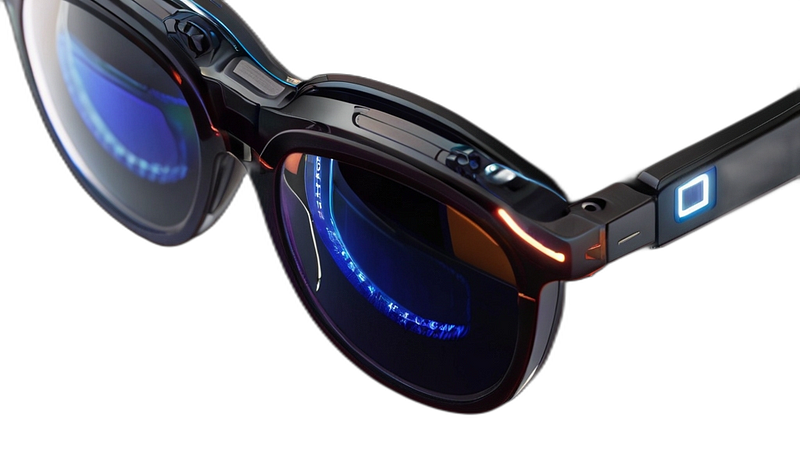Bionic Eyes: Elon Musk's Vision for the Future of Sight
Written on
Chapter 1: The Dawn of Bionic Vision
As we embark on a new age where humanity intertwines with technology, Elon Musk, a globally recognized innovator, is pioneering advancements that may forever alter our perception of reality. His venture, Neuralink, has made significant strides, including the successful implantation of a brain chip in a human being.
This landmark achievement has unlocked a realm of possibilities. Musk’s groundbreaking innovation, known as Telepathy, allows users to manipulate devices solely with their thoughts, providing a remarkable advantage for individuals facing physical challenges.
Through sophisticated software and hardware, Telepathy establishes a fluid connection, eliminating the necessity for manual control and enhancing accessibility in ways previously thought unattainable.
Neuralink’s wireless brain implant aims to restore vision by bridging the connection between the brain and the eyes, heralding a transformative shift in our world.
Section 1.1: Understanding the Bionic Eye
When we encounter the term “bionic eye,” we might envision high-tech replacements for our natural eyes. However, Musk's interpretation of a bionic eye transcends mere replacement.
This innovative device, often called a retinal or visual prosthesis, is a remarkable leap in medical technology designed to restore vision for those affected by blindness or visual impairments stemming from conditions like retinitis pigmentosa or age-related macular degeneration.
Instead of completely substituting the eye, it stimulates healthy nerve cells that remain intact, circumventing damaged areas like the retina that are crucial for transmitting visual signals to the brain. The potential psychological benefits and improvements in quality of life for patients regaining their eyesight without surgical eye removal are profound.
Musk envisions that bionic eyes could not only restore sight but eventually enhance it beyond natural human capabilities.

Section 1.2: How the Bionic Eye Functions
The bionic eye operates through three fundamental components:
- External Camera System: Users don a sophisticated pair of glasses equipped with a camera that captures visual information from their surroundings, similar to a digital camera.
- Signal Processing Unit: A compact, portable unit worn by the user processes the visual data collected by the camera, converting it into electrical signals that the brain can interpret.
- Implanted Electrode Array: The processed signals are wirelessly sent to an implanted electrode array, which is surgically placed on the retina or directly within the brain’s visual cortex. These electrodes stimulate remaining healthy retinal or brain cells, bypassing the damaged regions to create a visual perception.
As individuals lose their vision, the brain undergoes neuroplasticity, adapting to the loss of visual input. A bionic eye, which captures images through a camera while the other eye retains natural sight, allows the brain to combine and integrate information from both sources over time.
While current technology cannot fully mimic natural vision, the brain's remarkable adaptability offers hope for users of bionic eyes. As advancements continue, the integration of bionic vision into everyday life will become increasingly feasible.
Video: Elon Musk's Bionic Eyes Are Here - This video explores the potential of Musk's bionic eye technology, highlighting its implications for restoring vision and enhancing human capabilities.
Chapter 2: The Future of Sight
As Musk and his team further develop this innovative bionic eye, we stand on the brink of a groundbreaking era in human enhancement. The capacity to restore vision to those who are blind is merely the starting point. The potential uses of this technology are only limited by our imagination.
Consider the possibilities: enhancing natural vision, integrating with augmented reality systems, and providing newfound independence for millions suffering from visual impairments. Imagine the joy of seeing loved ones again, navigating new environments with ease, or relishing the beauty of the world — all achievable through a small chip and an external camera.

Section 2.1: The Competition in Vision Restoration
While Neuralink is at the forefront of bionic technology, it is not alone in this endeavor. Companies like Bionic Vision Australia and Second Sight are also making substantial progress, each adopting unique methods to tackle the complex challenge of vision restoration.
In conclusion, the bionic eye represents a beacon of hope and innovation, challenging our previous notions of possibility. With the advancements led by Neuralink, Bionic Vision Australia, and Second Sight, we are entering a transformative era in perception and interaction with our environment.
Video: Bionic Eye Recipient Sees for First Time in 33 Years | Duke Health - This inspiring video showcases the life-changing experiences of individuals who have received bionic eyes, illustrating the profound impact of this technology on their lives.